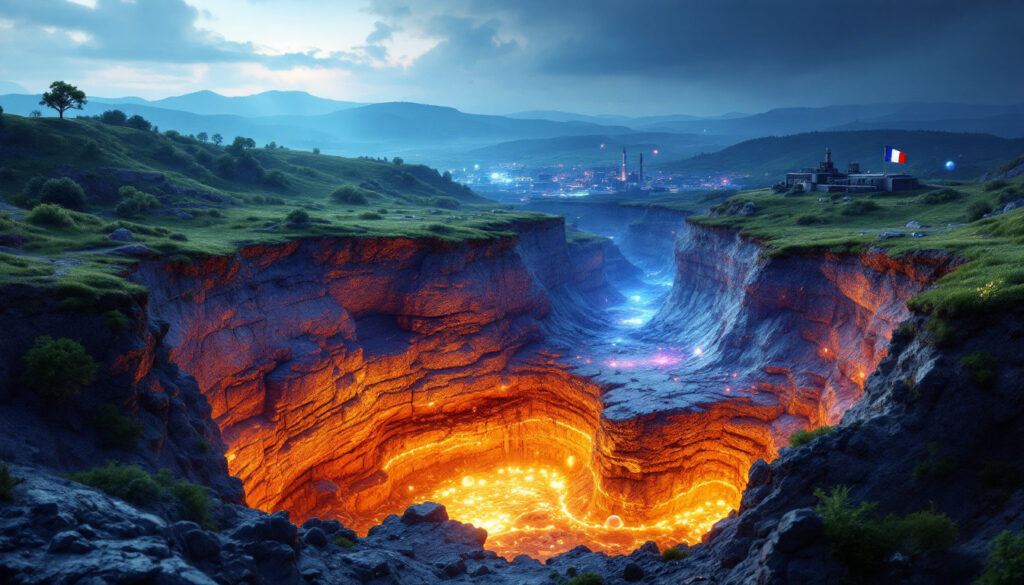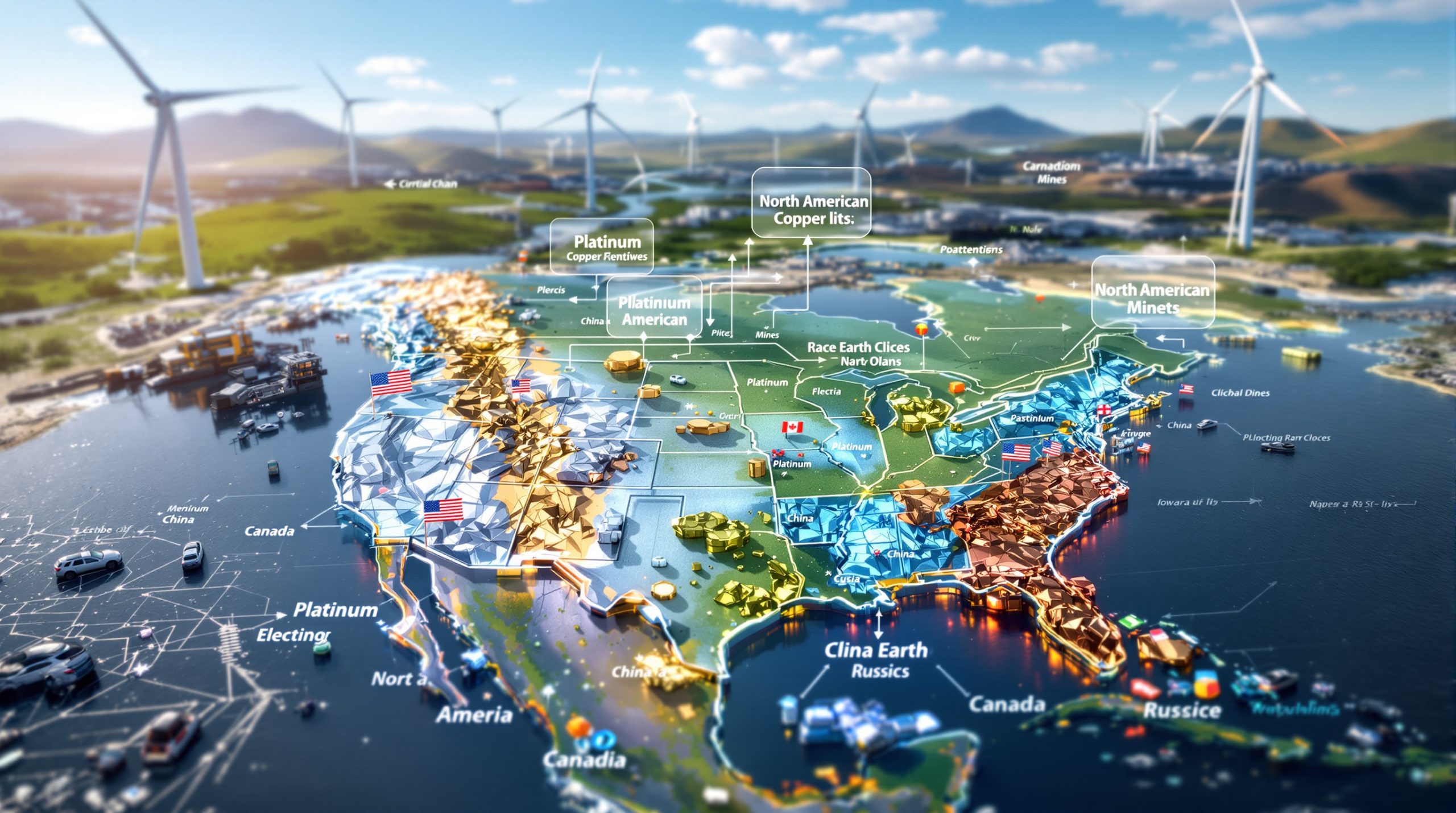What Is White Hydrogen and How Was It Discovered?
The Groundbreaking Discovery in France
In May 2023, scientists exploring abandoned mines in France's Lorraine region discovered naturally occurring hydrogen deposits, now referred to as "white hydrogen." Additional reserves were found in March 2025 in the nearby Moselle area. Combined, these deposits are estimated at approximately 92 million tons, with a potential value of around $92 billion.
The discovery emerged from efforts to repurpose legacy mining infrastructure, with researchers initially detecting significant hydrogen accumulations during surveys that were actually aimed at assessing methane reserves. This marked the first major natural hydrogen find in Europe, generating excitement throughout the scientific community.
The Science Behind White Hydrogen Formation
Natural hydrogen is generated through geological processes deep underground. According to a recent study published in Science Advances, one key process is serpentinization – a chemical reaction between water and iron-rich minerals in mantle rocks. Over millions of years, tectonic activity can trap and concentrate this hydrogen in underground reservoirs.
The serpentinization process occurs under high-pressure conditions in ultramafic rocks, producing hydrogen gas that gradually migrates upward and accumulates in porous geological formations. What makes this discovery particularly fascinating is that, unlike fossil fuels, these deposits may be replenishable, suggesting white hydrogen could potentially be classified as a renewable resource.
Why This Discovery Challenges Previous Assumptions
Before this discovery, the scientific consensus held that hydrogen didn't exist in large, accessible, free-form underground deposits. Most hydrogen was believed to be bound in compounds like water or hydrocarbons. Commercial hydrogen has traditionally been produced through methods like steam methane reforming, which uses natural gas as a feedstock and generates significant carbon dioxide.
The French discovery directly contradicts this view, revealing that tectonic activity and impermeable cap rocks can effectively trap hydrogen in commercial quantities. This revelation has prompted geologists worldwide to reevaluate existing geology of ore deposits, looking for similar formations that might have been overlooked. The find fundamentally challenges our understanding of hydrogen's behavior in the Earth's crust.
How Does White Hydrogen Compare to Other Hydrogen Types?
Different Types of Hydrogen Explained
- White Hydrogen: Naturally occurring hydrogen formed through geological processes, requiring no production process and generating zero carbon emissions
- Gray Hydrogen: Produced from fossil fuels, particularly through steam methane reforming of natural gas
- Green Hydrogen: Produced via electrolysis using renewable energy sources
Environmental Impact Comparison
White hydrogen offers a zero-carbon alternative that avoids both the high costs of green hydrogen production and the significant emissions associated with gray hydrogen. When hydrogen is burned as a fuel, it forms water vapor as the only significant emission, making it a potentially clean energy source.
A 2024 lifecycle analysis by the French Energy Agency found white hydrogen's carbon footprint to be 95% lower than gray hydrogen and 40% lower than green hydrogen when accounting for infrastructure development and extraction. Gray hydrogen typically emits 9-12 tons of CO₂ per ton of hydrogen produced, creating a substantial carbon burden that white hydrogen entirely avoids.
Economic Viability Assessment
The discovery could transform the economics of hydrogen energy by eliminating the carbon-intensive and costly production processes typically required. If extraction proves economically viable, white hydrogen could become significantly more cost-competitive than other forms of hydrogen.
Current cost comparisons show gray hydrogen at $1.50-$3.00/kg and green hydrogen at $4.00-$6.00/kg due to high renewable energy demands. Early estimates suggest white hydrogen extraction costs could fall below $1.00/kg, making it economically competitive not just with other hydrogen types but potentially with fossil fuels themselves.
What Are the Potential Implications for France's Energy Future?
Economic Transformation for the Lorraine Region
The Lorraine region, historically associated with coal and steel industries, could experience an economic revival as a clean energy hub. This transformation could bring new jobs, investment opportunities, and regional development.
Industry projections indicate potential investments of up to $12 billion in hydrogen infrastructure by 2030, creating approximately 15,000 jobs across extraction, processing, and transportation sectors. Government planning includes initiatives to repurpose industrial zones into hydrogen hubs, leveraging existing rail networks for efficient distribution.
Energy Security Enhancement
The white hydrogen discovery could significantly improve France's energy security by reducing dependence on imported fossil fuels. This self-sufficiency would provide a strategic advantage in an increasingly volatile global energy market.
Analysts project that France's hydrogen reserves could reduce natural gas imports by as much as 30% by 2035, substantially enhancing the nation's energy independence. This reduction in foreign energy dependence would strengthen France's economic resilience against geopolitical supply disruptions.
Climate Goals Advancement
As a zero-carbon energy source, white hydrogen could help France meet its climate commitments more effectively. It represents a potential bridge between current energy needs and long-term climate goals.
The French Ministry of Ecological Transition estimates that white hydrogen deployment in heavy industry and transportation could abate approximately 45 million tons of CO₂ annually. This substantial reduction would accelerate France's progress toward its 2050 carbon neutrality targets while supporting the broader European clean energy revolution.
What Challenges Must Be Overcome for White Hydrogen Development?
Technological and Extraction Hurdles
Unlike oil and gas, where decades of expertise and infrastructure exist, white hydrogen extraction technology is still in its infancy. Substantial investment in research and development will be required to develop efficient extraction methods.
A key challenge is hydrogen's extremely low density (0.08988 g/L at standard temperature and pressure), which necessitates novel compression or liquefaction techniques for effective storage and transport. Current pilot projects in the Moselle region are testing underground storage solutions in salt caverns, a method that has proven successful for strategic natural gas reserves.
Regulatory Framework Development
France, like most countries, currently lacks a clear regulatory framework for natural hydrogen exploration and production. Questions remain about ownership rights, environmental safeguards, and integration into existing energy markets.
Draft legislation under review in 2025 proposes establishing a royalty structure of 5-8% on extracted hydrogen, similar to policies governing natural gas. However, regulatory uncertainty continues to pose potential delays for commercial development as policymakers navigate this unprecedented resource category.
Transportation and Infrastructure Challenges
Hydrogen has a low energy density, creating significant challenges for transportation over long distances. New infrastructure will be needed to effectively utilize this resource at scale.
The existing natural gas pipeline network cannot simply be repurposed for hydrogen without substantial modifications, as hydrogen's molecular properties cause embrittlement in conventional steel pipes. Developing hydrogen-specific infrastructure will require significant capital investment and potentially new right-of-way agreements across large geographical areas.
How Might This Discovery Impact Global Energy Markets?
Global Exploration Potential
The French discovery has generated excitement worldwide, with geologists and energy companies reevaluating rock formations once thought to be of little interest. Natural hydrogen could become the focus of exploration efforts across multiple continents.
Following France's discovery, exploration licenses for hydrogen have surged by approximately 300% worldwide, with particular activity in Australia's Perth Basin and across the U.S. Midwest. Companies previously focused exclusively on fossil fuels are now establishing natural hydrogen divisions, signaling a fundamental shift in energy exploration strategies.
Renewable Resource Potential
Notably, research suggests these hydrogen reservoirs may be replenishable, meaning white hydrogen could potentially be classified as a renewable resource rather than a finite one.
Geological studies indicate that serpentinization processes continue actively at depth, suggesting that with appropriate management, extraction rates could potentially align with natural production cycles. This renewability aspect fundamentally differentiates white hydrogen from fossil fuels and positions it uniquely within the energy transition landscape.
Investment Landscape Shifts
If similar deposits are found globally, white hydrogen could emerge as a significant player in the global energy mix—complementing renewables, displacing fossil fuels, and attracting substantial investment in new extraction and utilization technologies.
Goldman Sachs projects that the global white hydrogen market could reach $1.2 trillion by 2050, potentially displacing approximately 15% of fossil fuel demand in hard-to-abate sectors such as steel production, chemical manufacturing, and heavy transportation. This represents a fundamental reshaping of energy investment patterns over the coming decades.
FAQ About Natural Hydrogen in France
Is white hydrogen the same as naturally occurring hydrogen?
Yes, "white hydrogen" is the term now being used to describe naturally occurring hydrogen that forms underground through geological processes. It's called "white" to distinguish it from other color-coded hydrogen types like "gray" (from fossil fuels) and "green" (from renewable-powered electrolysis).
How common are natural hydrogen deposits expected to be?
While France's finds are substantial, it's currently unclear how common similar formations might be globally. The discovery has prompted renewed geological exploration worldwide to assess the potential prevalence of these deposits.
Preliminary surveys suggest that suitable geological conditions for natural hydrogen accumulation may exist across multiple regions including parts of Australia, North America, and areas along the East African Rift. However, comprehensive mapping remains in early stages.
When might commercial extraction of white hydrogen begin?
Commercial extraction timelines remain uncertain as the technology for efficiently extracting natural hydrogen is still developing. Regulatory frameworks and infrastructure development will also influence commercialization timelines.
Industry experts project that small-scale commercial operations could begin in France as early as 2027, with full-scale production potentially ramping up in the 2030s. Much depends on the success of current pilot extraction projects and the evolution of hydrogen demand in key industrial sectors.
How does the cost of white hydrogen compare to other energy sources?
The full economic analysis of white hydrogen extraction and utilization is still emerging. However, if extraction proves efficient, white hydrogen could potentially offer significant cost advantages over both conventional hydrogen production methods and some other energy sources.
The Future of White Hydrogen Technology
Research and Development Priorities
Key areas requiring further research include developing specialized drilling and extraction techniques for hydrogen, creating appropriate storage solutions, and designing transportation systems that account for hydrogen's unique properties.
Material science innovations are particularly important, as conventional metals used in gas infrastructure suffer from hydrogen embrittlement. New composite materials and specialized alloys resistant to hydrogen permeation will be essential for safe, long-term infrastructure development.
Potential Applications Beyond Energy
Beyond its use as a fuel, hydrogen has important applications in industries like fertilizer production, metal refining, and chemical manufacturing. White hydrogen could potentially serve these markets with a significantly lower carbon footprint.
The steel industry represents a particularly promising application, as hydrogen can replace coal as a reducing agent in iron processing. Early trials indicate that hydrogen-based direct reduction of iron could reduce emissions by up to 95% compared to traditional blast furnace methods, creating a pathway to truly green steel production.
Integration with Existing Energy Systems
For white hydrogen to reach its full potential, integration strategies with existing energy infrastructure will be crucial. This includes potential blending with natural gas in existing pipelines and developing hydrogen-specific distribution networks.
European grid operators are currently testing hydrogen blending at concentrations of up to 20% in conventional natural gas pipelines, providing a transitional pathway while dedicated hydrogen infrastructure develops. Longer-term plans involve creating "hydrogen valleys" where production, storage, and end-use are geographically concentrated to minimize transportation challenges.
Expert Insight: "The discovery of natural hydrogen deposits in France may not yet be a game-changer—but it could be. With the right mix of innovation, investment, and policy, white hydrogen might just carve out a vital niche in the clean energy future," notes Robert Rapier, chemical engineer with 25 years of experience in the energy industry.
Conclusion: A Potential Energy Inflection Point
The discovery of natural hydrogen find in France represents a potentially transformative moment in our understanding of energy resources. While significant technological, regulatory, and infrastructure challenges remain, white hydrogen could emerge as an important component of the global transition to cleaner energy sources.
What once seemed like a misunderstanding—the idea of "drilling hydrogen wells"—may now become a legitimate approach to sourcing this clean-burning fuel. As exploration continues and extraction technologies develop, the true significance of this discovery will become clearer, potentially reshaping energy strategies both in France and beyond.
The Lorraine-Moselle discoveries underscore white hydrogen's potential as a renewable, low-cost energy carrier. While challenges persist in scaling extraction and infrastructure, collaborative efforts between geologists, engineers, and policymakers could position white hydrogen as a cornerstone of the clean energy revolution. Future research priorities include optimizing extraction yields and integrating digital twins in mining to evaluate emerging mining innovations for hydrogen. Furthermore, comprehensive mining feasibility studies will be critical to determine the economic viability of various extraction methods across different geological formations.
Looking for the Next Major Resource Discovery?
Discovery Alert's proprietary Discovery IQ model instantly identifies significant ASX mineral discoveries, providing real-time insights on potentially transformative finds like the white hydrogen deposits discussed above. Explore historic mining discoveries and their exceptional returns by visiting Discovery Alert's discoveries page and begin your 30-day free trial to position yourself ahead of the market.




